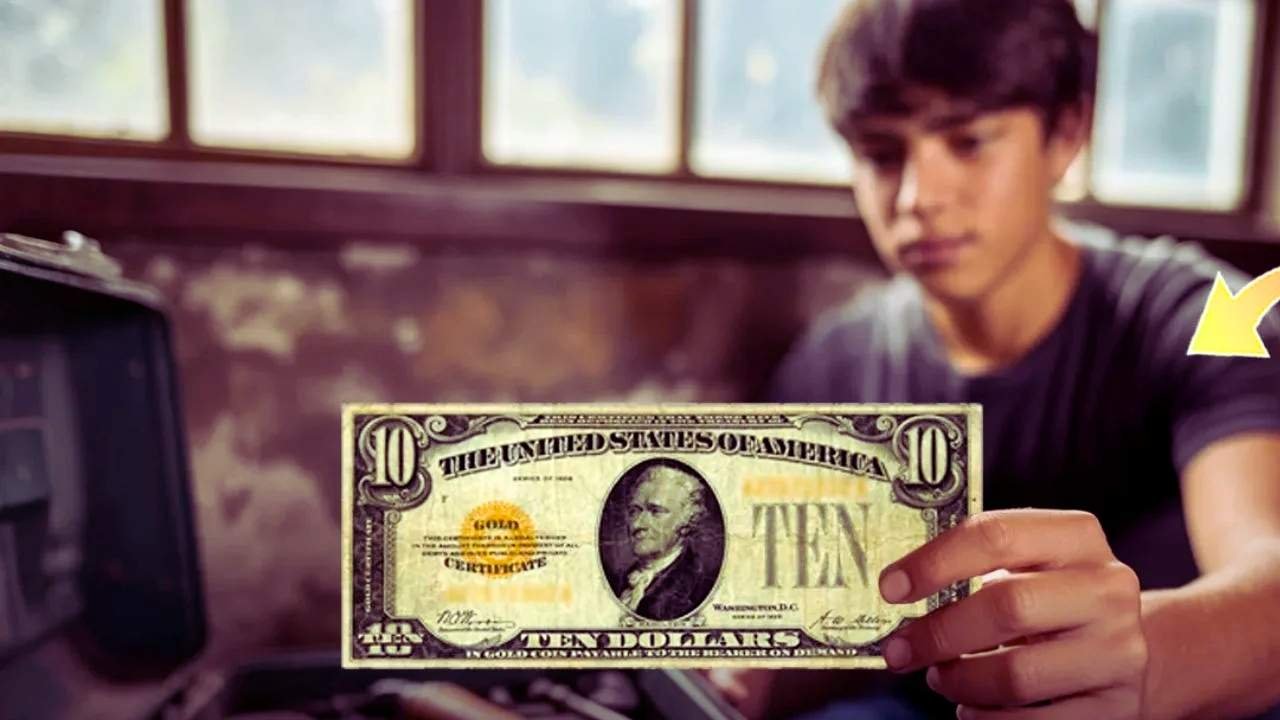A 16-year-old from Ohio stumbled upon a jaw-dropping find while cleaning out his late grandfather’s toolbox: a rare $10 gold certificate from 1922. What started as a routine chore turned into a treasure hunt that has collectors buzzing nationwide. This old piece of paper money, once used to trade for actual gold, is now worth thousands, sparking a frenzy among numismatists. Here’s the story of this incredible discovery and why it’s got everyone talking.
How the Treasure Was Found
Jake Carter, a high school sophomore, was sorting through his grandpa’s dusty toolbox in their family garage when he found an old metal tin tucked under rusty wrenches. Inside was a faded, creased $10 gold certificate, its golden-yellow ink still striking after a century. Jake’s grandpa, a mechanic who passed away last year, loved collecting odds and ends, but no one knew he had hidden such a prize. “I thought it was fake at first,” Jake said. “Then I showed it to my dad, and we started researching.”
What Is a Gold Certificate?
Gold certificates were special U.S. money issued from the 1860s to the 1930s. People could swap them for gold coins at banks, back when the dollar was tied to gold. The $10 version from 1922, featuring a portrait of President Abraham Lincoln, is especially rare because most were destroyed after the government stopped using them in 1933. Today, collectors prize these notes for their history and scarcity. Here’s a quick look at the certificate’s key details:
| Feature | Details |
|---|---|
| Denomination | $10 |
| Year Issued | 1922 |
| Portrait | Abraham Lincoln |
| Estimated Value | $5,000 – $50,000 (based on condition) |
Why Collectors Are Excited
Jake’s find has set the collector world on fire. Experts say a 1922 $10 gold certificate in good condition can sell for $5,000, while one in pristine shape could fetch up to $50,000 at auction. The note’s value depends on its condition, and Jake’s is having it professionally graded to determine its quality. Auction houses and collectors have already reached out, eager to bid. “It’s like finding a rare Pokémon card, but way bigger,” said Sarah Miller, a coin shop owner in Cleveland. The buzz has even inspired others to check their attics for hidden treasures.
What’s Next for Jake and the Certificate?
Jake and his family are still deciding what to do with the certificate. They could sell it at auction, donate it to a museum, or keep it as a family heirloom. Jake’s dad, Tom, says they’re leaning toward selling to help pay for Jake’s college. To move forward, they’re taking these steps:
- Getting the note appraised by a certified expert.
- Storing it in a safe place to avoid damage.
- Researching trusted auction houses for the sale.
Whatever they choose, the find has brought Jake closer to his grandpa’s memory. “It’s like he left me a secret to discover,” he said.
A Lesson in Hidden Treasures
This story shows how treasures can hide in the most unexpected places. Jake’s discovery has sparked a wave of excitement, reminding everyone that old boxes and forgotten toolkits might hold valuable history. For collectors, it’s a thrilling chase for a rare piece of America’s past. And for Jake, it’s a life-changing moment that turned a toolbox into a goldmine. If you’ve got old stuff lying around, maybe it’s time to take a closer look you could be sitting on the next big find.
